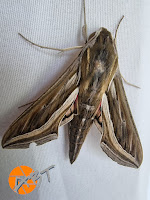STUDY WILDLIFE CONSERVATION

To succeed as global custodians and future stewards of our planet; conservationists and supporters of wildlife conservation should be well-versed in the underlying principles of natural ecosystems and the 'wilderness' concept... Through training and educational programs focused on conservation and wildlife management knowledge, African Bush Training in partnership with the International Students Conservation Initiative (ISCI) provides ways to create a lasting base of environmental literacy, stewardship, and competency for people working in conservation. The ISCI accredited courses introduces participants to the most up-to-date, in-field conservation techniques and practices. The six week full-time programme or one week short-course selection (6 courses), provides a stepping stone for nature lovers looking to possibly pursue a career in wildlife conservation, or are interested in how conservation organisations operate. AFRICAN BUSH TRAINING www.abt-...





